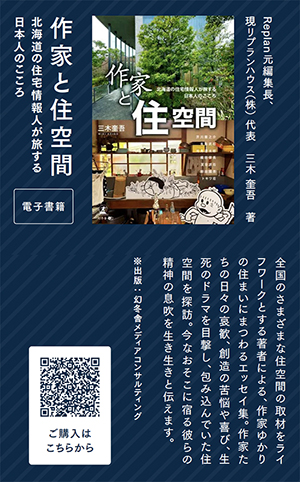


昨日の「松島」での芭蕉さんの様子に続いて、この当時(江戸中期)みちのくと言えば松島と並び称されるほどにその「風向明媚」ぶりが垂涎されていた秋田県にかほ市の「象潟〜きさかた」について、であります。(写真は7/31千歳-東京の空便からの鳥海山遠景と象潟の田植え時期写真、Googleマップ)
この象潟は秋田県と山形県の「県境」の鳥海山を背景とした地域。芭蕉さんは前日に現在の山形県酒田市から日本海側の道を通って北上したと書かれている。現在の道路を通って36.7kmなので、まぁ1日がかりの道程だったことだろう。ただ、その間ずっと鳥海山を右手にゆったりと北上した・・・と思いきや、奥の細道の描かれた様子では、ずっと雨に打たれ続けて象潟に到着しているようだ。
以下引用(山梨県立大学HP)〜6月15日:酒田より象潟に向けて出立。朝より小雨。昼過ぎ遊佐町(吹浦)に到着。強雨のためここに宿泊。 6月16日:吹浦を出発。降雨の中を秋田県由利郡象潟町へ。うやむやの関に至る。ここで雨甚だ強く、船小屋で休憩。昼過ぎ、塩越に到着。佐々木孫左衛門次郎宅に入る。ここで濡れた着物の着替えを調達した。うどんを出される。雨の中を象潟に行き、暮色を眺める。今野加兵衛来る。
どうもたいへん厳しい道行きだったよう。
「象潟や 雨に西施が ねぶの花 」
〜酒田の湊より東北の方、山を越、礒を伝ひ、いさごをふみて其際十里、日影やゝかたぶく比、汐風 真砂を吹上、雨朦朧として鳥海の山かくる。闇中に莫作して「雨も又奇也」とせば、雨後の晴色又たのもしきと、蜑の苫屋に膝をいれて、雨の晴を待。其朝天能霽て、朝日花やかにさし出る程に、象潟に舟をうかぶ。先能因島に舟をよせて、三年幽居の跡をとぶらひ、むかふの岸に舟をあがれば「花の上こぐ」とよまれし桜の老木、西行法師の記念をのこす。〔中略)寺の方丈に座して簾を捲ば、風景一眼の中に尽て、南に鳥海、天をさゝえ、其陰うつりて江にあり。〔中略)江の縦横一里ばかり、俤松島にかよひて、又異なり。松島は笑ふが如く、象潟はうらむがごとし。寂しさに悲しみをくはえて、地勢魂をなやますに似たり。〜奥の細道記述〔要旨)。
この象潟は江戸後期に大地震で一夜にして水面が消滅したということで、芭蕉の昔日をそのまま感じることはできない。西施というのは中国史に登場する「傾城の美女」・・・どうも中国史インテリ感が匂い立つ。
昨日のブログへの反響に「四周を海に囲まれた日本という地理条件での「美感」が日本三景には凝縮しているのでしょう。こういう美の極致の精神感覚は世界的に特異な民族性を涵養するのだろうか。美学者などが大いに研究して欲しい領域」と返信したのですが、象潟は現代では広大な田んぼに変わっていて、その田植えの時期に、片鱗をうかがう風情になっている。
松島は笑ふが如く、象潟はうらむがごとし、という芭蕉さんの心象は民族として興味深い。
●お知らせ
拙書「作家と住空間」幻冬舎から電子書籍で発刊
お求めはAmazonで。
https://amzn.asia/d/eUiv9yO

English version⬇
[Basho's haiku at Zoushikata, which disappeared due to natural disasters / A journey through Japanese 5-7 syllable poetry - 6]
The beauty of the sea, land, and islands is one of the three most scenic spots in Japan and is the basic melody of this archipelago society. It is a world apart from other regions of the earth. Haiku is an expression of that spirituality. ...
Following yesterday's account of Basho's visit to Matsushima, this article focuses on Kisakata in Kakunodate City, Akita Prefecture, which was considered to be as beautiful as Matsushima at that time (mid-Edo period) and was the envy of many. (Photos: July 31, 2023, aerial view of Mount Chokai from a flight between Chitose and Tokyo, and a photo of rice planting season in Kisakata, Google Maps)
Kisakata is a region located along the prefectural border between Akita and Yamagata Prefectures, with Mount Chokai as its backdrop. Basho is recorded as having traveled northward the previous day from what is now Sakata City in Yamagata Prefecture via the Japan Sea coast route. The current road is 36.7 km long, so it was probably a day-long journey. However, while one might imagine that he traveled northward leisurely with Mount Chōkai on his right, the description in “The Narrow Road to the Deep North” suggests that he arrived at Zōgata after being continuously drenched in rain.
June 15: Departed from Sakata for Zoushikata. Light rain in the morning. Arrived at Yusa Town (Fukaura) after noon. Stayed here due to heavy rain. June 16: Departed from Fukaura. Traveled through the rain to Zao Town, Yuri District, Akita Prefecture. Reached Uyamaya Pass. The rain was very heavy here, so we rested at a boat house. Arrived at Shiozaki in the afternoon. Entered the home of Sasaki Magosaburo Jiro. Here, we obtained dry clothes to change into. We were served udon noodles. Traveled through the rain to Zao and watched the sunset. Imono Kabei arrived.
It seems to have been a very difficult journey.
“Zoushikata, rain, Xi Shi, nebu flowers.”
From Sakata Port, we crossed the mountains, followed the coastline, and walked ten miles. As the sun began to set, the sea breeze blew sand onto the shore, and the rain obscured the view of Mount Chokai. In the darkness, I thought, “Rain is also a wonder,” and waited for the rain to clear in the thatched hut of a fisherman, looking forward to the clear sky after the rain. The next morning, the sky cleared, and the sun rose brightly, so I set sail for Zoushikata. We docked the boat at Sennin Island, visited the site of his three-year seclusion, and when we landed on the opposite shore, we saw the old cherry tree known as “the cherry tree that blooms above the flowers,” which commemorates Saigyo Hoshi. [Omitted] Sitting in the temple's main hall and rolling up the curtains, the scenery was all within sight, with Mount Chokai to the south, piercing the sky, and its shadow falling on the river. [Omitted] The bay stretches for about a mile in all directions, resembling Matsushima, yet different. Matsushima smiles, while Aisawa seems to lament. The loneliness adds to the sadness, as if the terrain itself were tormenting the soul. ~From “The Narrow Road to the Deep North” (summary).
This Zao Bay is said to have disappeared overnight due to a major earthquake in the late Edo period, so it is impossible to feel the same way as Basho did in the past. Xi Shi is a “beauty who brought down a city” who appears in Chinese history... It seems to have a strong sense of Chinese history.
In response to yesterday's blog, I replied, "The ‘sense of beauty’ in Japan's geographical conditions, surrounded by the sea on all sides, is condensed in the Three Great Views of Japan. Does this spiritual sense of the pinnacle of beauty nurture a uniquely distinctive national character? This is an area that art historians and others should study extensively." However, in modern times, Zao has transformed into vast rice fields, and during the rice-planting season, one can glimpse a hint of its former charm.
Basho's mental image of “Matsushima laughs, while Zao mourns” is fascinating from a national perspective.
●Notice
My book “Writers and Living Spaces” has been published as an e-book by Gentosha.
Available on Amazon.



























※コメント投稿者のブログIDはブログ作成者のみに通知されます